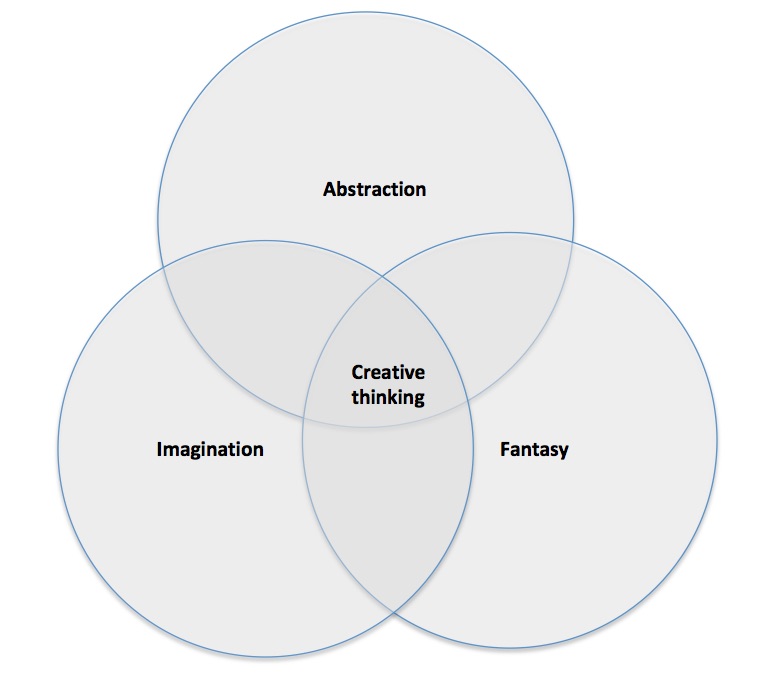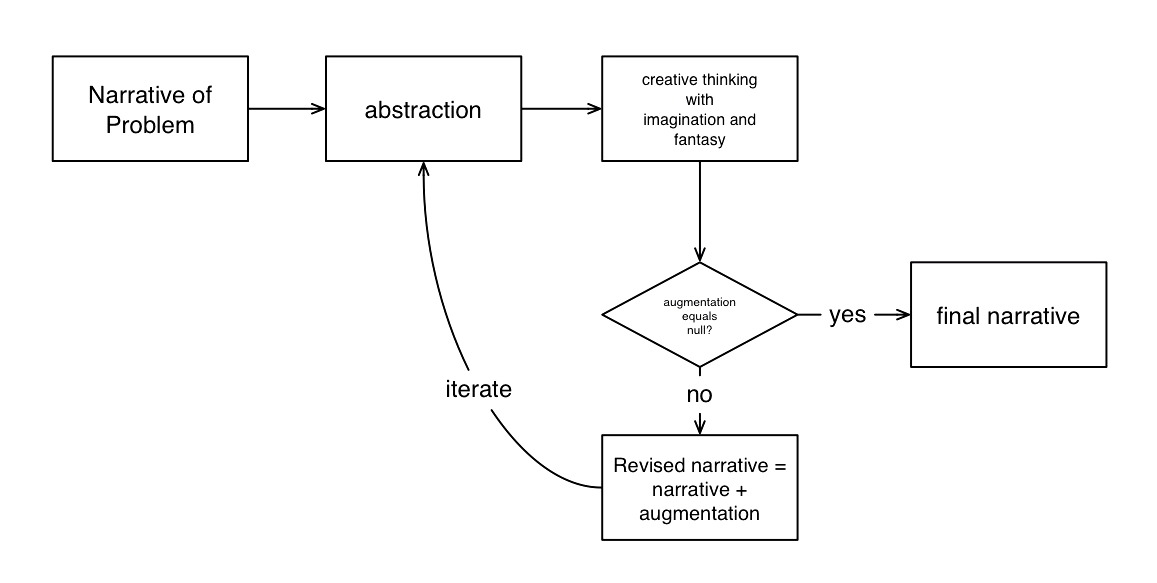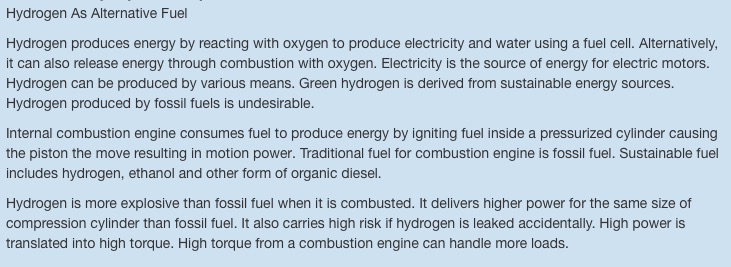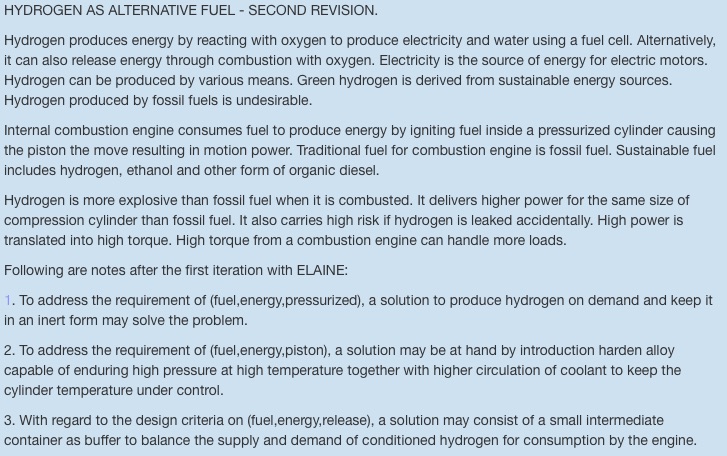Iterative Creative Thinking
Creative thinking leads to better ways in solving problem. Creative thinking does not guarantee for a better solution. However without it, progress will happen in a much slower pace.
Creative thinking is the foundation of invention and innovation. Statistical optimization can optimize a process, but creative thinking sparks new idea that can lead to non-incremental solutions. Even with the advancements on ML based AI, little progress was made in developing software tools for creative thinking. By applying logical abstraction on natural language narrative using software, we are one step closer to the creation of machine intelligence.
Elements of Creative Thinking
Creative thinking is the intersection of imagination, fantasy and abstraction on a narrative. Abstraction lifts our thinking from a concrete narrative to virtual. Imagination addresses the counterfactual. Fantasy connects new possibilities to the abstracted picture together with counterfactuals to deliver creative solutions.
The following diagram shows creative thinking as an intersection of abstraction, imagination, fantasy and abstraction:

When we apply our imagination and fantasy together with ELAINE's abstraction on the narrative, if there is any new insight, we turn such insight into augmentation for amendment to the latest narrative. The amended narrative is then submitted to ELAINE for another iteration. This process is shown in the following diagram:

An Example of Creative Thinking Using ELAINE
In order to give this discussion some context, we use a small narrative in the example. It provides basic context of the objective. In this case, the narrative is about "Hydrogen as alternative fuel". The following is the text provided to ELAINE:

Consider the above narrative as a seeding problem statement created by a researcher who wants to explore the subject of "Hydrogen As Alternative Fuel" using creative thinking. The process involves collaborating with ELAINE iteratively looking for related topics to provide more context to the topic.
The above text is submitted to ELAINE and it returns the following abstractions:
- (energy,oxygen)
- (fuel,energy,oxygen)
- (fuel,oxygen)
- (energy,release)
- (fuel,energy,release)
- (energy,pressurized)
- (fuel,energy,pressurized)
- (fuel,pressurized)
- (fuel,cylinder)
- (energy,piston)v
- (fuel,energy,piston)
- (fuel,piston)
- (hydrogen,energy,piston)
- (hydrogen,energy,oxygen)
- (fuel,energy,hydrogen)
with (fuel,energy,hydrogen) identified as a challenge.
By putting focus on these abstractions, one may consider more exploration of relationship between "fuel", "energy", "pressurized", "cylinder" and "piston" is warranted. The abstractions on "(hydrogen,energy,piston)" and "(fuel,energy,hydrogen)" can spark creative thinking.
For example, having these abstractions at hand, the following possible solutions may come to mind:
1. To address the abstraction on (fuel,energy,pressurized), a solution to produce hydrogen on demand and keep it in an inert form may solve the problem.
2. To address the abstraction on (fuel,energy,piston), a solution may be at hand by introducing harden alloy capable of enduring high pressure at high temperature together with higher circulation of coolant to keep the cylinder temperature under control.
3. With regards to the abstraction on (fuel,energy,release), a solution may consist of a small intermediate container as buffer to balance the supply and demand of conditioned hydrogen for consumption by the engine.
All of the above is only an example to show hypothetical assumptions from a layman, but it is not difficult to extrapolate such example into a practical scenario where design engineers can use ELAINE to expand the possibilities. By building upon this narrative with additional considerations through multiple iteration, one can drill down into more ideas and design specifications.
For an online report of ELAINE analysis on this sample narrative:
Click to view ELAINE analysis on 1st iteration
To further our discussion, we include the above notes as additional input to ELAINE for analysis. The following is the amended narrative:

The following is a new list of abstractions from the second iteration with ELAINE:
- (hydrogen,oxygen)
- (hydrogen,fuel,cylinder)
- (hydrogen,fuel,energy)
- (fuel,oxygen)
- (hydrogen,energy,oxygen)
- (hydrogen,fuel,oxygen)
- (hydrogen,fuel,fossil,risk)
- (hydrogen,fuel,risk)
- (hydrogen,cylinder)
- (hydrogen,fuel,fossil,cylinder)
- (hydrogen,fuel,combusted)
- (hydrogen,fuel,fossil,combusted)
- (fuel,energy)
- (hydrogen,energy,cylinder)
- (hydrogen,energy,pressurized)
From these abstractions, additional thinking can lead to additional design criteria. The following is a list of creative thoughts derived from ELAINE's abstraction:
1. Looking at abstraction (hydrogen,oxygen), there may be a need to create a mechanism to control the mix of fuel.
2. Looking at abstraction (hydrogen,fuel,cylinder), there may be a need to create a mechanism to inject the fuel mix to the engine cylinder.
3. Looking at abstraction (hydrogen,fuel,energy), one needs to address the cylinder volume and fuel mix in order to determine if we can meet the power requirement.
4. Looking at abstraction (fuel, oxygen), one has to evaluate the added benefit of using pure oxygen instead of using air as oxygen supply.
5. Looking at abstraction (hydrogen,fuel,fossil,risk,) one has to distinguish the additional risk as a result of using hydrogen as opposed to conventional fossil fuel.
6. Looking at abstraction (hydrogen,fuel,fossil,combusted) one needs to address new lubricant for the hydrogen combustion.
To view the second iteration in our creative design process with ELAINE on using hydrogen as an alternative fuel:
Click here to view ELAINE Analysis on 2nd iteration
Conclusion
ELAINE is a creative thinking tool. Here, we walked through two iterations of design sessions using a simple narrative of using hydrogen as alternative combustion fuel to seed a collaborative process. Similar process can be used to solve complex problems. ELAINE is agnostic to domain of discourse. The same iterative process can be applied to solve any complex problems independent of the nature of problem domain; including but not limited to government policy, legal, business, sales&marketing, media news, science, technology, finance and economy.